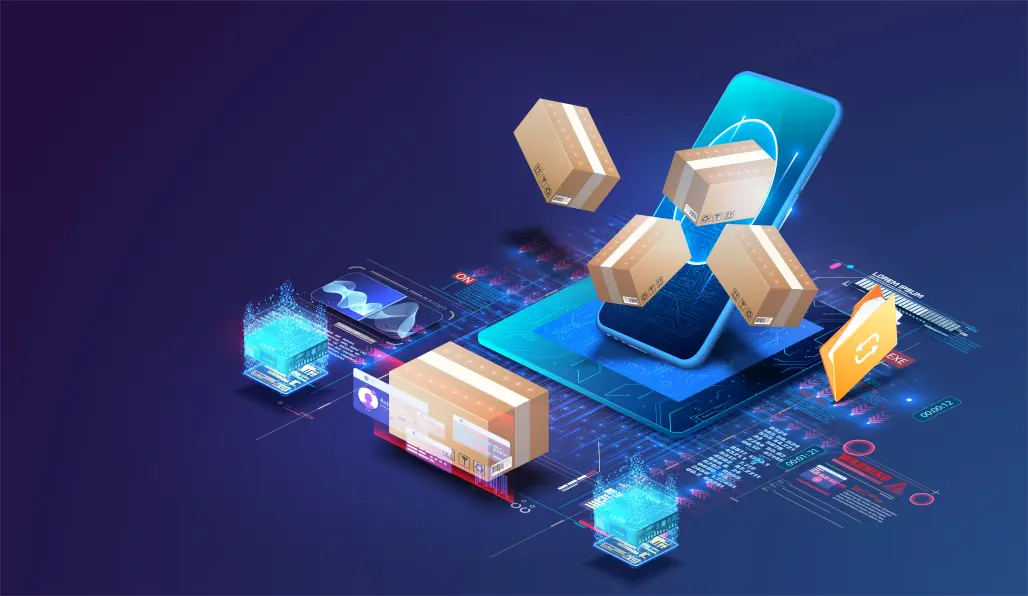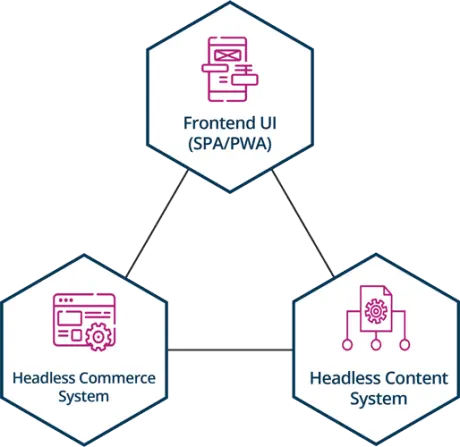Three Paths to Successful Content-Driven Commerce

The global pandemic has forever changed the e-commerce landscape, and the B2B world can learn a lot from the B2C community about how to succeed in the new digital buy cycle. Whether it’s increased personalization or a better data-driven understanding of how customers like to interact online, leading B2B companies have seen how taking a content-driven approach has transformed B2C shopping experiences.
B2B companies wanting to secure increased revenue, differentiate from competitors, and create a superior CX, are moving beyond transactional commerce towards enriched, omnichannel content-driven buying experiences.
The cornerstone of a successful content-driven commerce strategy is having the right architecture in place. In this post we look at three common paths to achieving it.
Building a composable content-driven architecture
Flexibility and seamless interaction between content and commerce is essential for success. With a “composable” commerce strategy, vs a monolithic approach, companies have the advantage that they can leverage specialized, best-of-breed providers for each of their commerce and marketing functions, rather than being locked into a single vendor, ensuring the best fit for each company’s unique requirements.
With a composable approach, it is also very easy to change providers, when new requirements emerge or market conditions change. This provides a more robust, agile and future-proof approach, as companies can avoid the pitfalls of vendor lock-in where enterprises are lumbered with expensive suites of out-dated or redundant tech and are unable to access the latest tools they need to move with their markets.
In a composable commerce architecture, the customer experience is not controlled by a single provider. Instead, it is controlled via the seamless interaction between providers with their respective services.
There are three main paths to creating a composable commerce system:
1. Starting on a greenfield site (Rare)
This can be the quickest and most effective scenario but is also the rarest.
For a company to decide to rebuild its entire commerce and content architecture from scratch is extremely rare in the market due to cost, time, and potential disruption of service. The advantage of this scenario is that composability can be designed in from the start, without any of the limitations or constraints of legacy systems.
2. From e-commerce system to composable content-driven commerce (Most Common)
Most companies aiming to transition to a composable commerce approach already have a pre-existing commerce solution in place. Often these companies have large, clunky, monolithic e-commerce systems that combine all functionality into one software solution.
To transition to a composable commerce model, we recommend four steps:
- Step 2: use a modular architecture for digital commerce technology to increase scalability
- Step 3: make it easy for the non-IT staff to update the system
- Step 4: consider CMS technology that is open to work with external applications
In step one, Progressive Web Apps (PWAs) or Single Page Applications (SPAs) are best suited for implementing an API for the frontend - enabling it to operate and change independently from the commerce platform.
Many commerce vendors offer pre-built PWA solutions, however if the goal is to create a content-driven solution leveraging your DXP’s PWA is often the most effective path to delivering on your CX and content strategy.
For step two, the focus is on embracing a modular, specialized approach to digital commerce technology. Key marketing and business functions are separated from the commerce system and provided by best-of-breed providers.
In content-driven commerce, a headless DXP or CMS is added to the commerce system to deliver enhanced, content-rich shopping experiences.
The "modular commerce" system can be visualized as a triangle comprising a frontend UI (PWA/ SPA) solution, a headless Digital Experience Platform (DXP) or Content Management System (CMS) and the commerce system.
This triangle is the basis for building the composable commerce architecture.

Step three is concerned with the experience of the business user – something that is often overlooked! Composable commerce implementations are often approached from a purely technical point of view and don't consider the workflow processes and usability afforded to editors and business users. It is essential that business users are given the appropriate tools to create the necessary experiences, and to do so with speed and agility. Companies should place special focus on enterprise CMS features and a low-code or no-code experiences for their editors.
Lastly, step four is about preparing to compose the core commerce application, in which central elements of the commerce platform, such as search or payment, are taken over by specialists and the architecture focuses more on packaged business capabilities.
3. The "new" way: Establish a composable content-driven e-commerce platform
The global pandemic has changed the way many companies view their e-commerce needs, and B2B companies have caught up to B2C companies as indicated by research from Salesforce which indicates that 89% of B2B companies expect the changes to continue after the pandemic ( source ).
Therefore, the move from a pure content system, such as a corporate website, to a content-driven commerce system is no longer unusual. The advantage is that the focus is usually already on the content system, which allows you to deliver on your content-driven strategy. Thus, commerce systems that support the composable commerce approach can be selected accordingly.
The first step will usually be a "Modular Commerce System", where the content management system is the leading system.
Beyond architecture - what's needed to implement content-driven commerce?
While the architecture described above is the foundation for content-driven composable commerce, success also depends on having a content-driven mindset, and the right resources.
Content-driven mindset
Especially in e-commerce, the focus is frequently on the product and the corresponding conversion rate associated with it. The conversion rate is the central element around which optimization takes place, often with minor changes that are validated in A/B testing.
It’s important to note that creating a content-driven approach is key to evolving the buy cycle and reducing the time to close the sale. Whether it’s digital self-service or engaging customer interest via shared content, companies must create next-generation digital shopping experiences that offer content that is personalized or is shared via multiple channels along every step of the purchase process. This approach puts the needs of the customer at the forefront and can go a long way toward improving the customer experience.
Content-driven commerce does not start directly here with the optimization of individual functions, but focuses on the entire customer experience, which extends from the first contact to the long-term customer relationship. The goal of content-driven commerce is to link the appropriate content for the respective situation of the customer with the corresponding commerce elements. Exactly what these commerce elements are can vary depending on the phase the customer is in and what their intentions are. When content matches the wants and needs of customers, it increases the chance of conversion and confers other advantages.
What resources are needed for content-driven commerce?
Most companies know their customers very well and are aware of their needs. Creating targeted content for various groups of customers provides them with enormous added value.
Many companies already have the key resource needed in-house: Knowhow about the products and the market.
Many manufacturers have detailed knowledge of their products and understand key business drivers across various departments, whether in purchasing, product management or sales. It is precisely these specialists that many customers are looking for!
This can bring together companies’ different types of content such as a how-to video for existing customers who are looking for a specific product. It can also be comparisons between various products or usage scenarios for prospective buyers or even inspirational content to inspire customers.
With an appropriate content strategy and the high-quality relevant and product-related content will lead to the customers to build trust and a long-term customer relationship.
To learn more, speak to an expert today →